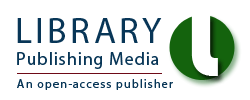

Dr Erik Miska, University of Cambridge, UK
The complex life of small RNAs
Professor Dr Georg Sczakiel, University of Lübeck, Germany
Cell stress-induced translocation of human Argonaute 2 protein is related to decreased RNA interference
Dr Stephanie Urschel, Thermo Scientific Genomics
A workflow for studying miRNA expression and identifying miRNA targets
Dr Charles Lawrie, University of Oxford, UK
MicroRNA expression in lymphoma
Dr Brian Schyth, Technical University of Denmark, Denmark
In vivo screening of backbone-modified siRNAs for their ability to induce interferone-based off-target effects
Dr Jörg Vollmer, Pfizer-Coley, Germany
Novel ways to modify immune modulation by DNA and RNA therapeutics
Dr Cecilia Lundin (Sponsored by PerkinElmer), University of Oxford, UK
RNAi screens to determine homologous recombination networks
Dr Dmitry Samarsky, RXi Pharmaceuticals, USA
Combination of oligo configuration and chemical modification provides drug-like properties to RNAi molecules
Dr Attila Seyhan, Pfizer-Wyeth, USA
Whole-genome RNAi screens to identify novel modulators of breast cancer genes
Dr William Arthur, Merck & Co, Inc, USA
Identification of new regulators of the Wnt-ß-catenin pathway via RNAi screening
Dr Tobias Poehlmann, Friedrich-Schiller-Universität Jena, Germany
Development of small interfering RNA, selectively activated in target cells
Dr Glen Reid, University of Sydney, Australia
A rapid and sensitive method to detect siRNA-mediated mRNA cleavage in vivo using 5′ RACE and a molecular beacon probe
Dr Luc JW van der Laan, Erasmus MC-University Medical Center, The Netherlands
Cell-to-cell transmission of small RNAs extends the therapeutic reach of RNAi
Ms Mariam Sharaf, Duke University, USA
Boranophosphate-modified RNA as potential anti-cancer therapeutic: Aptamers and RNA interference
Ms Dana Danielson, Steacie Institute of Molecular Sciences, Canada
Modifying p19 viral suppressors of RNA Silencing: Developing FRET-based probes for detecting and quantifying protein-small RNA interactions
Dr Sandra Laufer, University of Lübeck, Germany
Mechanistic studies of siRNA-mediated RNA interference in HeLa cell extract
18 March
Dr Petr Svoboda, Institute of Molecular Genetics, Czech Republic
Useless microRNAs in mammalian oocytes
Dr Martin Fabani, University of Cambridge, UK
Evaluation of peptide nucleic acids for in vivo inhibition of microRNA-155
Dr Jens Kurreck, University of Stüttgart, Germany
RNA interference approaches to inhibit cardiotropic viruses
Dr Graeme Doran, Massachusetts Institute of Technology, USA
Modular elements modulating RNA stability
Dr Zdravka Medarova, Massachussetts General Hospital, USA
Image-guided siRNA delivery
Dr Patrick Lu, Sirnaomics, Inc, USA
Multi-targeted siRNA therapeutics with three generations of nanoparticle delivery
Dr Roger Adami, MDRNA, Inc, USA
A novel amino acid based delivery platform for therapeutic applications in bladder cancer and hepatocellular carcinoma
Professor Andy Miller, Imperial College London, UK
Designing safe, self-assembly nanoparticles that enable nucleic acid therapeutics, molecular imaging and theranostics
Dr Seyed Javad Mowla, Tarbiat Modares University, Iran
Induction of apoptosis in tumour cell lines by suppressing the expression of OCT4B1 – a novel spliced variant of OCT4
